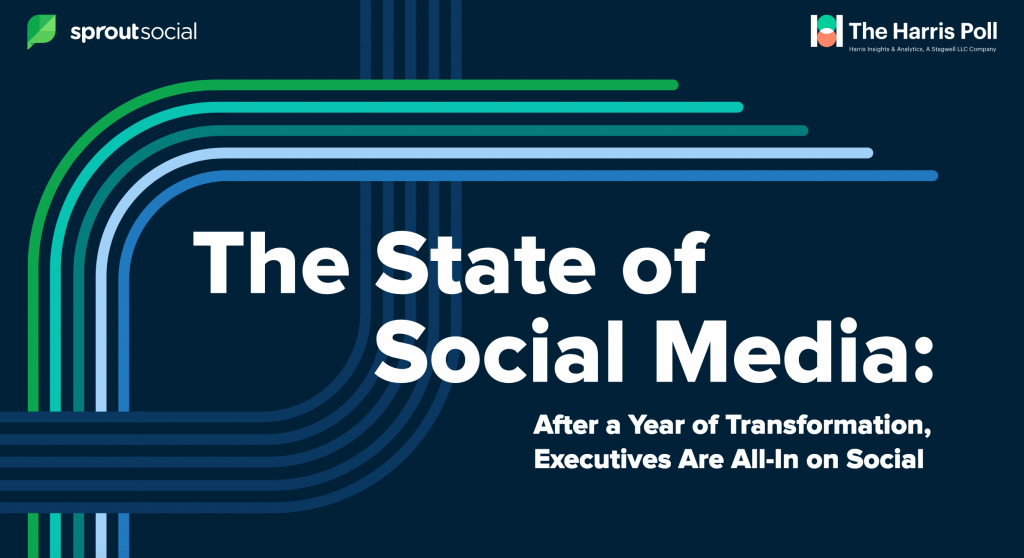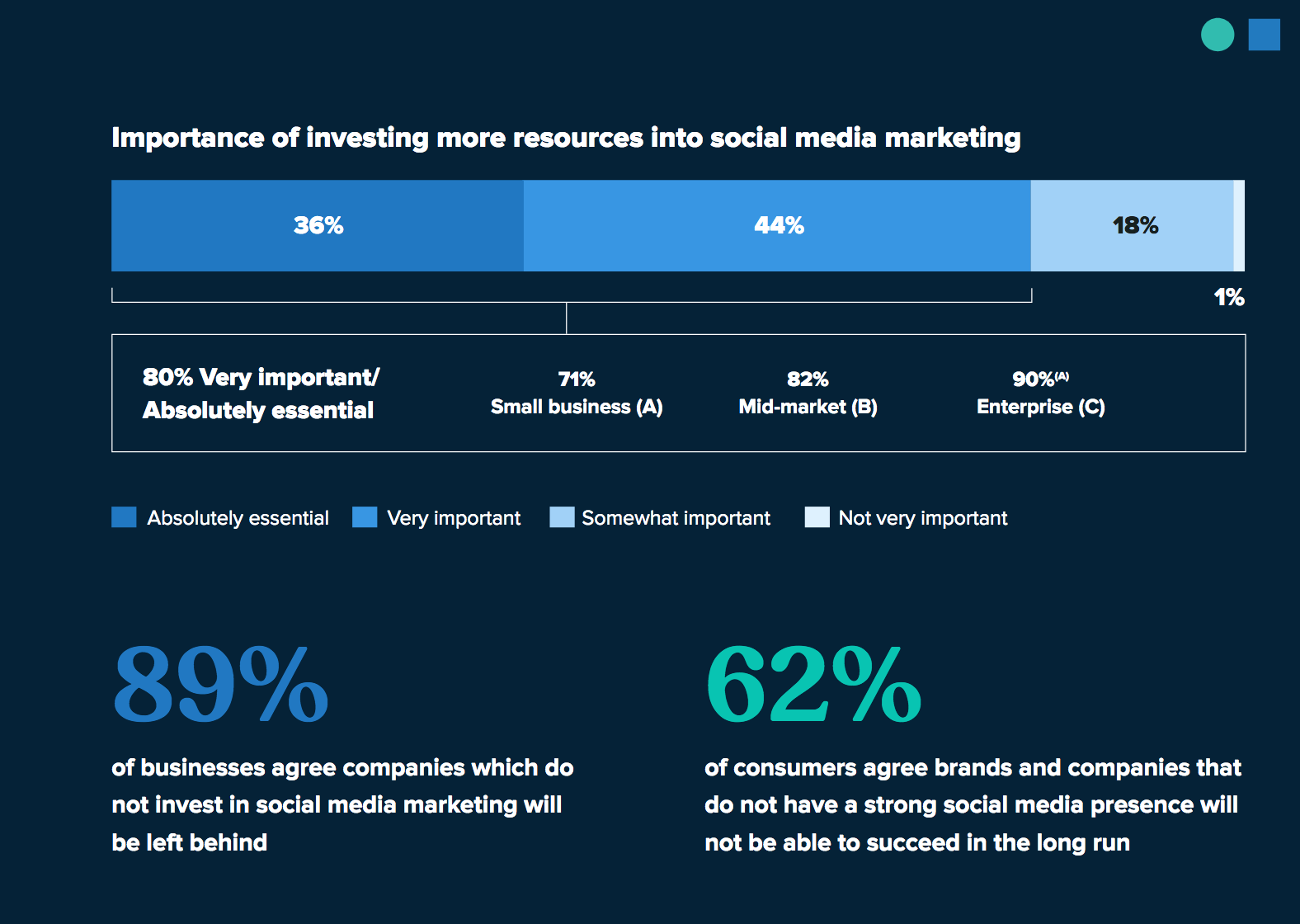 Social media as a marketing channel has come a long way—from “nice to have” to “must-have.” More than a third of executives recently surveyed by The Harris Poll for Sprout Social declared that devoting more resources to social media marketing was “absolutely essential.” Another 44 percent deemed it “very important.” And businesses seem to be walking the talk: 45 percent of the surveyed executives anticipated that their social media marketing budgets will increase significantly over the next three years, with 47 percent more expecting at least a slight increase.
Social media as a marketing channel has come a long way—from “nice to have” to “must-have.” More than a third of executives recently surveyed by The Harris Poll for Sprout Social declared that devoting more resources to social media marketing was “absolutely essential.” Another 44 percent deemed it “very important.” And businesses seem to be walking the talk: 45 percent of the surveyed executives anticipated that their social media marketing budgets will increase significantly over the next three years, with 47 percent more expecting at least a slight increase.
“Seeing how many business executives not only anticipate their social media marketing budgets to increase over the next three years but also expect social to become their primary external communication channel—58 percent—solidifies just how critical social is for overall business strategy,” says Rachael Samuels, Senior Manager of Social Media at Sprout Social. The social media analytics company commissioned the Harris Poll to survey 250 executives and 1,006 consumers who use social media.
In addition to the majority of executives expecting social media to become their primary channel for communicating with consumers, 63 percent of consumers surveyed predicted the same. And consumers don’t want that communication to consist solely of pretty photos on Instagram. Sixty-one percent expected companies to provide them with a more personalized social media experience based on their previous interactions. What’s more, 51 percent of consumers wanted businesses to know them better based on their social media activity—though at the same time, 63 percent said that it was essential or very important that companies use consumers’ social data “responsibly.”
“Consumers have come to expect personalized experiences from the businesses they interact with,” Samuels says. “The extent to how often or to what depth people want brands to follow them online will be different consumer to consumer. However, the data indicates that brands that do not invest some time into understanding their audience’s online activity will be at a disadvantage as they work to build lasting relationships.”
Put simply, if a company’s target market is primarily Gen Z, 43 percent of whom are likely to buy directly from a social media platform, it might make sense to offer content that enables them to purchase from Instagram or WhatsApp. Conversely, since only about a fifth of baby boomers buy directly from social media, brands targeting that audience might want to focus more on informational, inspirational content on Facebook or Pinterest.
Nearly three-quarters (72 percent) of the executives surveyed are already using information culled from social media to inform business decisions. Only 37 percent are using it to personalize their communications with individual customers, however. More popular uses for the data include informing product development (45 percent), measuring the success of a campaign or program (47 percent), and collecting consumer insights (52 percent). “Companies that are able to analyze this data in real time will be able to quickly pivot a campaign, impact a product launch or inform future research and development, among other things,” Samuels says.
The second most-common use of social data, practiced by 49 percent of the surveyed executives, is to provide customer service and support. That’s important, as responsive customer service is the number one-way companies can provide a personalized, positive social experience. Two-thirds of the consumers surveyed cited it as essential or very important, with relevant content in second place (59 percent).
Businesses seem to be somewhat underestimating the significance of social media for customer service, with only 60 percent currently using the channel for that purpose. That said, 88 percent of the executives expected social media to become the primary channel for customer service within the next few years.




